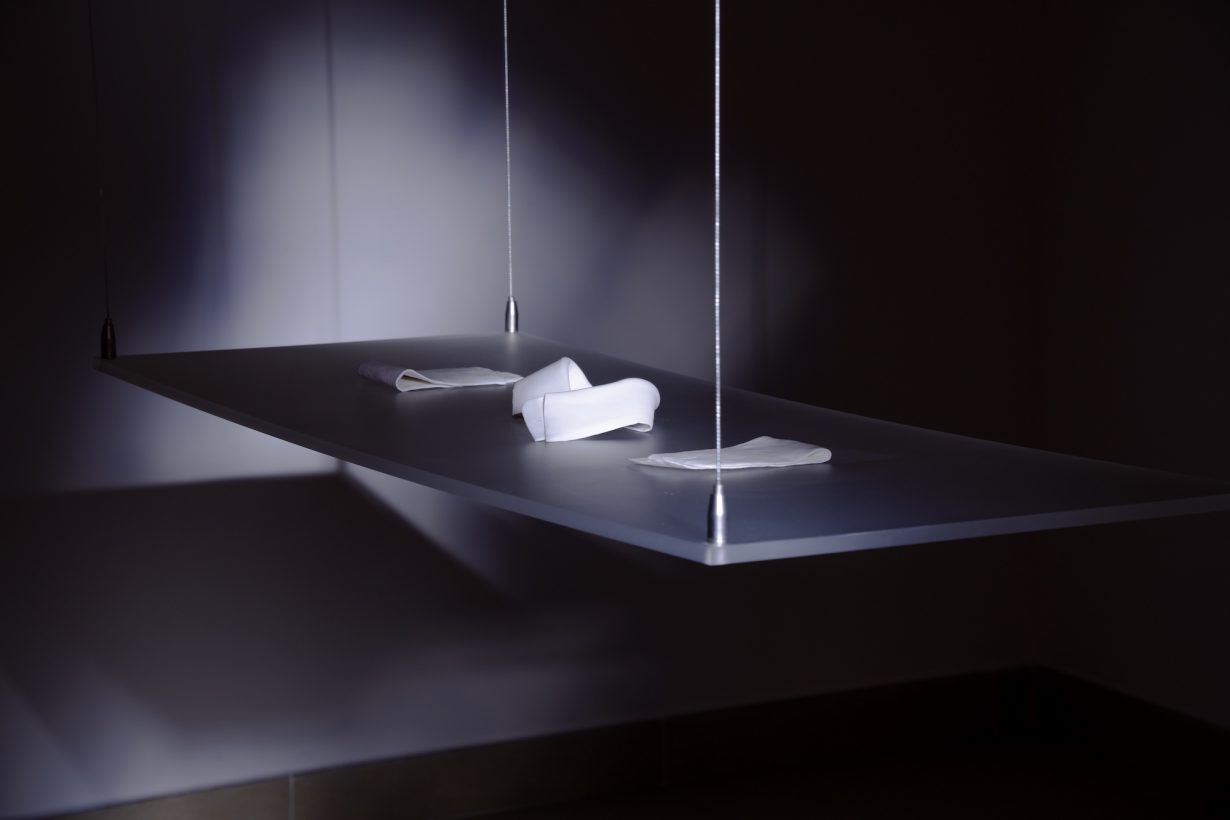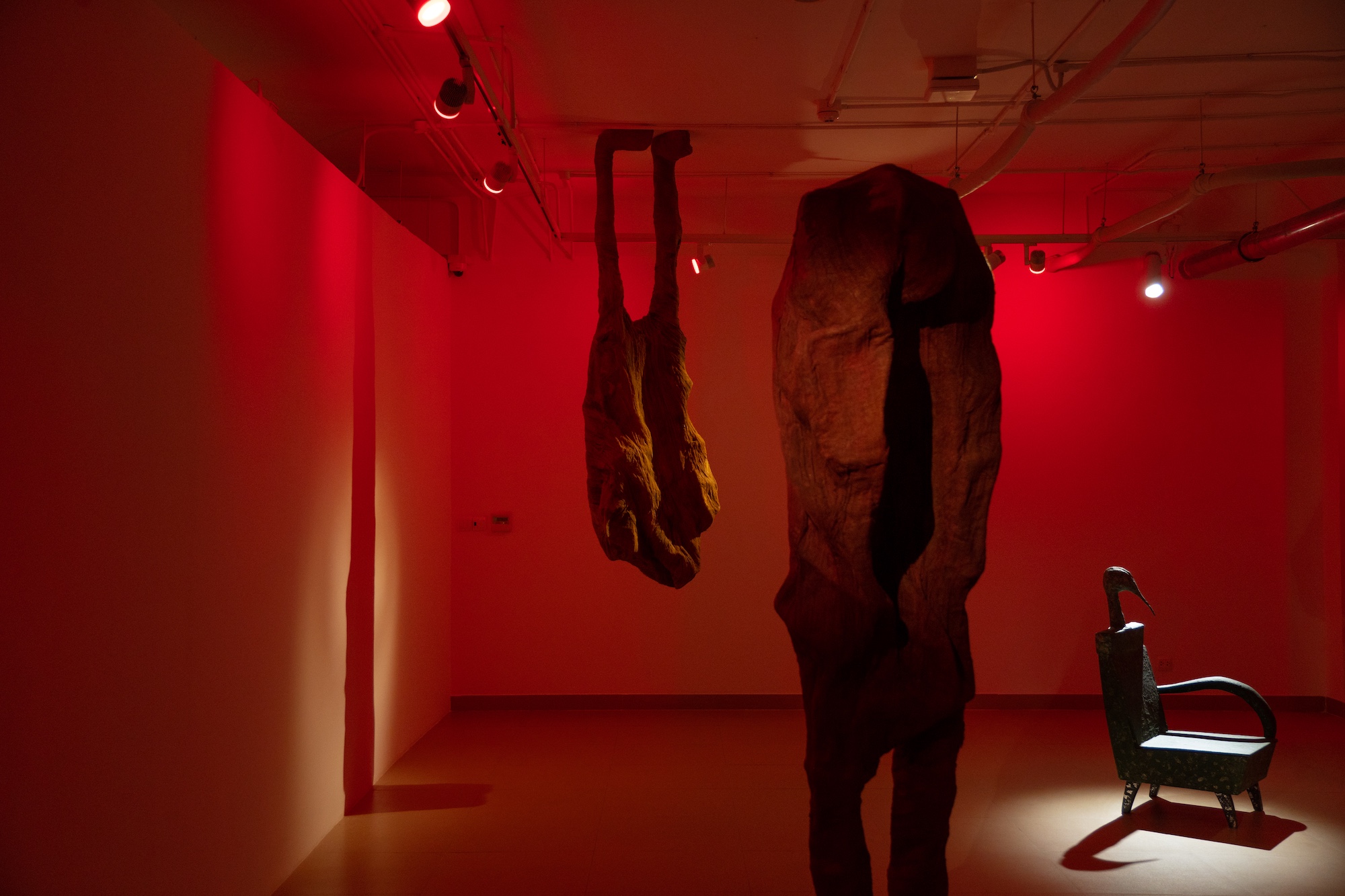At Nguyen Art Foundation, four artists reveal how the material ties in to the emotional
Nguyễn Thúy Hằng’s The Warriors (2011–15) comprises a series of statues, each of which is wrapped in either muslin or paper, huddled together on the ground or hung upside down from the ceiling. Their forms evoke oversize humans but could equally refer to giant birds or bats. Often used as a shroud in funerary rites in Vietnam, the muslin here is not pristine but wrinkled, like mature skin. These sculptures are meant to deteriorate with time. The exhibition handout tells visitors that the work commemorates the experience of the artist’s family, who were forced to flee to Thailand during the 1930s during the Franco-Vietnam War, and, more widely, people who have been displaced or exiled.
Nguyễn is one of four female artists whose work is on show in this exhibition, which showcases both emerging and more established artists whose sensory investigations of material encourage audiences to engage with their own emotions. Born between the late 1970s and the early 2000s, these artists work in sculpture, painting and video. The works are split across Nguyen Art Foundation’s two exhibition spaces, which are housed at different locations of the EMASI international school. At the Nam Long site, Nguyễn’s work can be found alongside ceramic sculptures by Linh San, who also grapples with personal loss through objects that resemble stacked, folded, rolled or crumpled A4 sheets of paper (nights, 2022). Scattered across the dimly lit room on low pedestals, these works require viewers to bend down to observe them more intimately. The fragility of the forms speak of the effort and tenderness it took to create them.

Over at the school’s Van Phuc campus, material experimentations take a dreamier, lighter turn. Oanh Phi Phi updates the traditional medium of Vietnamese lacquer in Palimpsest (2011–), an ongoing series for which she paints lacquer resin onto glass plates and then inserts the plates into self-made magic lanterns attached to standing poles. The resulting images, which range from colour wheels to abstract shapes, are projected onto a screen; as they overlap, they turn into impressionistic washes of colour. Typical perceptions about the dark and rich material are altered: lacquer here takes on an ethereal quality.
In the same space, Lêna Bùi’s multimedia installations create a mysterious, oneiric world. There are handwoven wool carpets depicting human chakra maps (Cosmos no.1 & 2, both 2021) and double-layered watercolour-on-silk paintings of semiabstract shapes that recall entangled roots or water ripples (Tidal no.7, 2024). As viewers contemplate these forms while walking barefoot (as per the artist’s instruction), a mix of cosmic sounds from the video Light (2024), such as solar flare frequencies and Earth whistlers, take them deeper into Bùi’s magical world. This is an exhibition that not only highlights diverse material choices and visual inspirations, but also reveals how intimate, immersive experiences can activate a range of emotional states, from pathos to dreaminess.
In Absence, Presence at Nguyen Art Foundation, Ho Chi Minh City, September – January
From the Spring 2025 issue of ArtReview Asia – get your copy.
